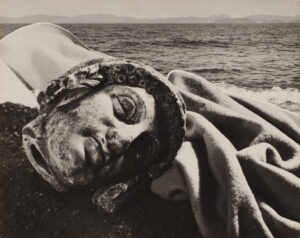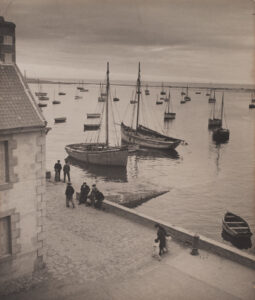Florence Henri
Swiss, 1893—1982
About
Florence Henri
Swiss, 1893—1982
Florence Henri first discovered the possibilities of experimental photography while studying under Josef Albers and László Moholy-Nagy at the Bauhaus school in 1927. She had studied music, and then painting with Fernand Leger in Paris, before turning to photography, where her explorations with unusual perspectives, mirrors, prisms, photomontage, multiple exposures, and photograms would make her an important member of the avant-garde “New Vision” movement. Henri’s work demonstrates the influence of Surrealism, Cubism, and Constructivism, and was included in many exhibitions and publications during the late 1920s and early 1930s, including the landmark exhibitions Film und Foto and Photographie der Gegenwart, both in 1929. Florence Henri is known for her portraits and still-lifes involving mirrors, carefully positioned to blur distinctions between the real and reflected image. After her studies, Henri established a studio in Paris where she completed commissions for portraits, advertising, and fashion photographs for Vogue and The New York Herald, among others. She taught photography in Paris until 1963, when she returned her attention to abstract painting. The San Francisco Museum of Modern Art organized a retrospective exhibition of Henri’s work in 1990.

